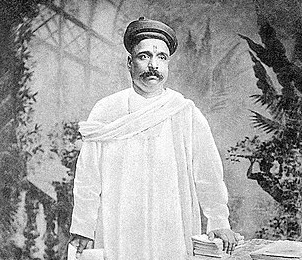History and Facts About Kho-Kho
Written by Manya Pandey, a first-year undergraduate student.
Did you know that the history of Kho-Kho traces its roots back to Mahabharata?
Written by Manya Pandey, a first-year undergraduate student
Fun fact: Did you know that in the olden times, Kho-Kho was played on horses and buggies?

What is Kho-Kho?
Just like kabaddi, Kho-Kho is a traditional Indian sport. It’s an outdoor game played all around the country mostly in the raw mud grounds. In a way, it’s an Indianised version of catch-and-chase games with much more fun rules.
Did you know that Bal Gangadhar Tilak, who was an Indian freedom fighter, is considered the founder of modern-day Kho-Kho? (more on that below)
It is one of the oldest traditional games in India, and the second most popular one after Kabaddi.
Interestingly, the game of Kho-Kho traces its roots back to Mahabharata, based on events that happened over 3000 years ago.
The game is also popular in countries like Sri Lanka, Pakistan, Bangladesh, and Nepal.
About the Kho Kho game
The main objective of the game is to run and hunt down the opposite team members and get points.
There are two innings in a game – with a small break in between. The teams take turns to chase and defend. Each inning has two turns and each turn lasts for nine minutes. During this time the teams take turns to chase and defend. The team that has the most points at the end, wins.
If at the end of the match, there’s a tie then another innings are played. If there is still no winner, both teams take a turns to win a point.
The team that gains the most points wins in the least amount of time is the winner.
More about Kho Kho
Kho-Kho is played in a team of two, with 12 players each.
The teams are divided into chasers and defenders. The chasing team has to hunt down the runners sent by the defending team.
But, here’s the thing, not all players play at once – the active players in each team are 9, not 12. This is because each team can keep three substitute players.
At its core, Kho-Kho is like the game of tag, but here’s the catch: A chaser can exchange their position with any of the inactive team members just by saying the word “Kho”!
How do you make a “Kho”?
It’s pretty easy, all you have to do is, touch your teammate and say the word “Kho”. After passing the “Kho” you’ve got to take their position quickly.
Here’s how to play Kho-Kho
- The game starts with a toss, the winning team takes the position of chasers
- Eight chasers sit in a row, down on their knees facing each other, and the ninth player, called the active chaser, tries to touch the defenders sent by the opposing team.
- The opposite team (defender team) sends 3 runners to run around the poles and avoid being touched by the active chaser for 9 minutes
- If a chaser touches any of the 3 runners within 9 minutes, they score a point
- The three runners can go between the chasers, who are sitting but the chasers must not pass through their teammates, or the referee issues a penalty on them.
- An active chaser can only turn back to chase after he touches the pole at either end of the line.
Hope you this explains how to play Kho-Kho.
History of Kho-Kho
Like all things in history, there are a few versions of the origin of Kho-Kho
Most experts believe that Kho Kho originated in what is now called the Maharashtra region in India. In the past, the game was played on ‘raths’ (chariots) and thus called Rathera.
The present version of the game played on foot seems to have originated in 1914, during World War I.
No one knows exactly when the game came into existence but the history of Kho-Kho is as old as The Mahabharata, as stated earlier. Some variations of techniques used in “Rathera” can be found in Mahabharata.
The detailed history of Kho-Kho
To understand the complete history of Kho-Kho, you’ll first need to know what the Mahabharata is.
Mahabharata is a sacred Hindu text believed to be written by Rishi Vyasa. The story revolves around a conflict between the Kauravas and Pandav cousins; the conflict grows into an 18-day-war between the hundred Kauravas brothers and five Pandavas.
Cut to the part of our interest: the Chakravyuha formation
The epic states that that the evil Kaurava brothers created an impenetrable war formation that no one besides Abhimanyu, the son of the Pandava Arjuna, could break.
Fortunately, Abhimanyu knew how to break into the formation but didn’t know the way back. The brave Abhimanyu breached the battle formation on his chariot and returned as a martyr
So how is the history of Kho-Kho related to the battle?
Scholars have noted that the techniques used by Abhimanyu to break the war formation are similar to a defensive technique deployed in “Rathera”(an ancient version of the Kho Kho game)
Some more quick facts about Kho-Kho
- Bal Gangadhar and Bhai Narorkar Tilak drafted the first-ever rules of kho-kho at the Deccan Gymkhana club in Pune, Maharashtra
- Their regulations determined the area of a classic Kho-Kho playground for the first time.
- Kho-Kho Federation of India (KKFI), was formed in 1955
- In 1959, they organised the first-ever All India Kho Kho Championship at Vijayawada, Andhra Pradesh.
- Women’s Kho-Kho championship was organised in 1960-61 for the first time in Kolhapur, Maharashtra.
- In 1996 Kho-Kho took to the international stage
Did you know that Kho-Kho was once part of the Olympic games? Here’s a short history of Kho-Kho on a global level.
- In 1936 Kho-Kho was displayed as a special performance at the Berlin Olympics (as were Kabaddi and Mallakhamb)
- It was staged in Sweden and Denmark in 1949 but received little public attention
- Kho-Kho made its first international appearance in 1996 at the 1st Asian Kho Kho Championship in Kolkata
- The second Kho-Kho Asian championship was held in 2000 in Dhaka, Bangladesh
Founder of modern-day Kho-Kho
Bal Gangadhar Tilak, an Indian freedom fighter is considered the founder of Kho-Kho. He is also given the name “Lokmanya” meaning “someone who is loved by people”.

Image Credit: Wikimedia Commons
Kho has existed in India for many years but the modern form of the game was shaped by Bal Gangadhar Tilak (also called Lokmanya).
To popularise the local game, Lokmanya tilak drafted the first-ever rules of Kho-Kho at a club in Pune, Maharashtra named Deccan gymkhana. The club was founded by Mr. Balkrishna Narayan (Bandopant) Bhajekar in 1906.
In his rulebook, he defined the area of the playground but the poles used in international tournaments were added later.
About Lokmanya Tilak
Bal Gangadhar Tilak was born on July 23, 1856, in the Ratnagiri district of Maharashtra. He belonged to a Marathi Brahmin family and was a firm believer in “swaraj”(self-rule).
He was the first leader of the Indian independence movement and Mahatma Gandhi called him “The Maker of Modern India”
Facts About Kho-Kho
1. Kho-Kho is played in 4 innings of 9 mins each
The game has many local variations in rules and regulations but on an international level, each team gets two turns to chase and defend. And points are deducted if the chasing team cannot touch the opposite team within 9 minutes
2. India’s Kho-Kho team bagged 2 golds at the 2016 South Asian Games(SAG)
South Asian Games are held every four years between the countries of South Asia. In the 2016 SAG Guwahati Kho-Kho championship, both Indian men and women Kho-Kho teams bagged gold defeating Bangladesh and Nepal.
2 Captain of the National women’s Kho-Kho team has been playing since age 10
Sarika Kale, the captain of the women’s Kho Kho team of India developed an interest in Kho-Kho at the early age of 10. She has represented her state Maharashtra in 25 national championships and also has won the Arjuna Award(second-most recognised award in the Indian sporting industry)
4. Internationally the game is played on specially developed mats
The game is played in the mud throughout the nation but internationally it is played on special mats designed for better grips, which is why Indian players need more practice on such equipment.
5. Kho Kho playground is 27 meters long and 16 meters wide
The dimensions of the sporting ground were fixed first by the Indian freedom fighter Lokmanya tilak. Later on, poles were added to the games and the sitting distance between chasers was fixed at 230 cm.
Facts about Kho-Kho awards
1 “Abhimanyu Award” is given to the best youth player
Named after the brave warrior of the Mahabharata, the Abhimanyu award is given to girls and boys under 18 years who display exceptional performance in a match. It was launched in 1970.
2 Arjuna award is the second-highest sporting honour
Arjuna award is given by The Ministry of Youth Affairs and Sports (Government of India) to players for their outstanding achievement in Kho Kho national sports – this is of course not only for Kho-Kho but for all sports. It stands second to the highest honour in the sports industry—Major Dhyan Chand Khel Ratna Award.
It also includes a cash reward of 5 lakh rupees along with a bronze statue of Arjuna(the finest archer in Mahabharata)
3. Dronacharya Award—honours Kho-Kho coaches with a cash reward of 7 lakhs
Dronacharya award is named after the great guru of both Pandavas and Kauravas. It is given out in recognition of excellent Indian coaches who display excellent performance in teaching the training of the Kho-Kho players. Kho Kho coach Gopal Purushottam Phadke received the award in the year 2000.
4. Rani Laxmi Bai award for women in Kho-Kho
Named after the great female warrior of the nation, these awards honour the exceptional women player of Kho-Kho with a cash reward of one lakh rupees, similarly, the Janaki award is given to girls under 18 for the same.
Officials in Kho-Kho
Now that we know how to play Kho-Kho, let’s see the roles of some on-ground officials.
Referee
Every Kho-Kho match takes place under the jurisdiction of a referee. He ensures that the game is conducted fair and square. The referee can also penalise the players for any foul play.
Umpire
Every official game of Kho-Kho requires two umpires. They declare each time a runner is touched.
Timekeeper
The timekeeper declares the end of each quarter which typically lasts for 9 minutes and the scorer keeps a check on the scores of each team.
Scorer
The scorer keeps a check on the scores of each team.
Have you ever played this game?
Frequently Asked Questions
Headline Image: https://olympics.com/en/news/kho-kho-history-rules-how-to-play
I Kid You Not now has a large readership across India and also parts of the world. If you want to write for us, you can submit your story here. You can also apply to become a news anchor. Apply here




Comments